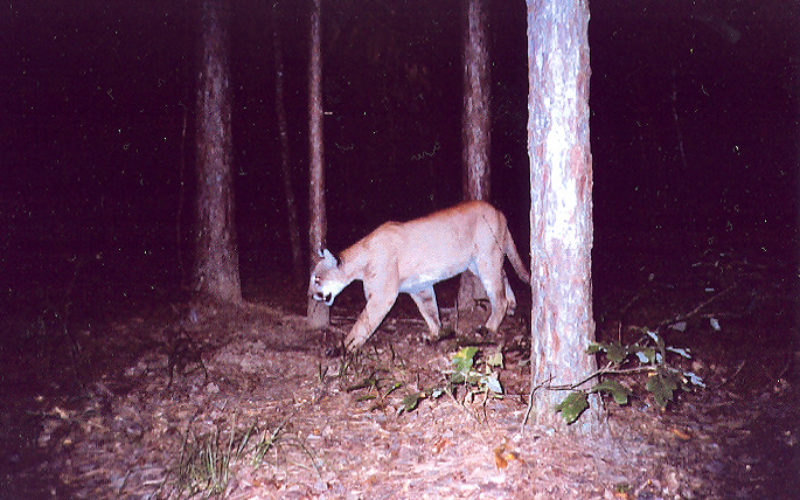Trail cameras let wildlife lovers peek in
AMANDA BANCROFT
Making Ripples
Animals have a tendency to flee as soon as they get a whiff of nearby humans. Needless to say, this makes watching wildlife harder. To learn more about the natural world and record its mysteries, professionals and amateurs alike use trail cameras. These multi-purpose devices provide home security, aid biologists with their mammal research, assist law enforcement in policing rural areas, and help hunters locate game trails. For the wildlife enthusiast, however, trail cams are good old-fashioned fun using the latest technology.
Also called “camera traps,” some are shaped like wooden bird boxes, others are camouflaged like they’re in the army, and most just look like gray boxes with a lens. By using motion and heat detectors, they can take photos during the daytime and at night. At night, cameras will either deploy infrared flash for black and white shots (detectable or undetectable “no glow” infrared options) or a white flash, resulting in color photos. Since the white flash varieties are noticeable to humans and often spook wildlife, they are much less popular than infrared varieties. Many cameras can also record video.
Besides knowing the basics of how the camera works, its range or detection zone, and whether or not it’s appropriate for your situation (take a quiz at TrailCamPro.com), you’ll want to keep in mind the battery life. Longer-lasting and rechargeable batteries create less waste going to landfills. Lithium batteries are recommended over alkaline batteries because they last longer, perform better in winter and keep their ability to fully charge throughout their lifetime. For a trail camera, this could be about one year.
There are tiny solar panels that can be mounted with any trail cameras which have an “external power port,” according to Cabela’s website. However, they remind buyers that this will make the camera more noticeable, and it must be mounted in the sunshine to receive enough power. If that’s not a problem for your site, solar-powered cameras will spare you from having to recharge batteries at home.
Pictures are stored on the camera’s SD card, similar to the kinds used in digital cameras. But it’s not recommended to insert a trail cam card into a digital camera; they’re designed to be used in computers or with smart phones that have an adapter.
What will it cost you? A quick search online reveals a wide price range, from $40 to $200. In general, you can expect to pay about $50 for one of the basic trail cams with hundreds of positive reviews on Amazon. They’re also sold at Walmart and online retailers.
The popularity of watching wildlife when we’re not even around has increased in recent years. Backyard birders and gardeners love to see their animal friends and foes in action. Trail cams provide a window to a world we can never truly enter, but only visit — from a distance.
Amanda Bancroft is a writer, artist, and naturalist living in an off-grid tiny house on Kessler Mountain. She and her husband Ryan blog about their adventures and offer tips to those wanting to make a difference at www.RipplesBlog.org.










